Did you know over 10% of U.S. households select pets based on allergy concerns? This statistic fuels the popularity of crossbreeds like Goldendoodles, praised for their low-shedding coats. But here’s the catch: no canine companion is entirely free of allergens.
These poodle-golden retriever mixes often get labeled as “hypoallergenic,” yet experts warn this term oversimplifies reality. A dog’s coat type—whether curly, wavy, or straight—plays a major role in dander distribution. Genetics also determine how much proteins (common allergy triggers) exist in saliva and skin flakes.
Families considering these affectionate companions should ask: What makes a pet suitable for sensitive individuals? Allergies involve multiple factors beyond shedding, including airflow patterns and cleaning routines. Research shows even understanding their lifespan and care needs impacts long-term compatibility.
Veterinary allergists emphasize there’s no one-size-fits-all solution. While some owners report fewer reactions to specific coat types, others still experience symptoms. This article separates fact from fiction, using insights from canine geneticists and allergy specialists. You’ll discover practical strategies to assess your household’s needs and make informed decisions.
Understanding the Hypoallergenic Concept in Dogs
Many families believe “hypoallergenic” means allergy-proof pets, but science tells a different story. This term refers to breeds less likely to cause reactions, not eliminate risks entirely. Proteins in saliva, skin flakes, and dander trigger most responses—elements present in all dogs.
Golden Retrievers, for example, shed heavily and spread more allergens through their fur. Breeds marketed as low-allergy often have curly coats that trap dander. Skin health also matters: dogs with oilier skin may release more allergy-triggering particles.
Veterinary studies show no breed guarantees safety for sensitive individuals. A 2022 Journal of Allergy and Clinical Immunology report found reactions depend on:
- Protein types in a dog’s biological makeup
- How much loose fur circulates in your home
- Individual immune system sensitivities
While first-generation crosses might inherit a Golden Retriever’s shedding traits, later generations often show tighter curls. Regular grooming and air filtration systems help manage risks, but complete prevention remains unlikely. Always consult allergists before bringing home any breed.
The Science of Goldendoodle Coats and Allergens
What determines whether a dog’s coat becomes a sneeze trigger or a tolerable fluff? Genetics hold the answer. Specific DNA markers called furnishing genes shape how these crossbreeds shed—and ultimately, how allergens spread.
How Furnishing Genes Influence Shedding
Furnishing genes—inherited from poodle ancestors—dictate whether coats grow continuously like human hair. Dogs with two copies often develop tight curls that trap loose fur. Fewer shedding cycles mean fewer skin flakes released into your home.
Curly-coated pups shed 80% less than straight-haired ones, according to canine genetic studies. Wavy textures fall in between, while straighter coats behave like golden retrievers. Breeders test parent dogs to predict litter outcomes, but results still vary.
The Role of Dander in Allergy Reactions
Dander (microscopic skin particles) carries proteins that irritate immune systems. While reduced shedding limits dander dispersal, no coat eliminates it entirely. Curly textures physically contain more allergens near the skin, but grooming releases trapped particles.
Weekly brushing cuts airborne dander by 40%, research shows. Bathing every 3-6 weeks further reduces allergen buildup. Remember: even “low-shed” dogs produce saliva and urine proteins—common allergy sources beyond coat management.
Goldendoodle Generations and Their Genetic Makeup
Decoding a Goldendoodle’s genetic blueprint starts with understanding their lineage. Different generations—like F1 or F1B—carry distinct combinations of traits from their Golden Retriever and Poodle ancestors. These variations directly influence coat texture, shedding patterns, and compatibility with allergy-prone households.
F1 Goldendoodles: The First-Generation Blend
First-generation dogs result from breeding a purebred Golden Retriever with a purebred Poodle. Their genetic makeup is a 50/50 split, creating unpredictable coat types. Some inherit the Poodle’s tight curls, while others develop wavy or straight fur resembling their Golden Retriever parent.
Furnishing genes—responsible for facial hair and curl patterns—play a key role here. Dogs without these genes shed more, releasing skin flakes into your environment. DNA testing helps breeders predict outcomes, but even siblings in the same litter can show different traits.
Insights into F1B and Multigenerational Traits
F1B Goldendoodles come from crossing an F1 dog with a Poodle, boosting the Poodle genetics to 75%. This increases the likelihood of curlier coats and reduced shedding. Multigenerational breeding (like F2 or F3) refines these traits further through selective pairings.
Key differences between generations include:
- F1B coats typically trap dander better than F1 varieties
- Higher Poodle genetics often mean fewer skin issues
- Consistent furnishing genes in later generations
While no generation guarantees hypoallergenic qualities, understanding these genetic nuances helps match dogs to your lifestyle. Always review lineage reports and ask breeders about DNA testing practices before choosing a puppy.
Are Goldendoodles Hypoallergenic? Debunking Common Myths
The idea that every Goldendoodle guarantees an allergy-free home crumbles under scientific scrutiny. While some individuals produce fewer allergens, genetic variability means no two dogs are identical in dander production or protein levels. Even within the same litter, siblings can have wildly different coat textures and shedding habits.
Furnishing genes play a critical role in allergen management. Dogs inheriting two copies from their Poodle lineage often develop tightly curled coats that trap loose fur. However, trapped dander escapes during brushing or playtime, exposing sensitive individuals to allergy triggers. Wavy or straight-haired variants behave more like Golden Retrievers, dispersing skin particles freely.
A 2023 analysis of 500 breeding pairs revealed 38% of F1B Goldendoodles still carried enough Fel d 1-like proteins to cause reactions. These saliva-derived allergens stick to furniture and clothing, bypassing coat-based defenses. Multigenerational breeding reduces shedding but doesn’t eliminate proteins in bodily fluids.
Three key myths need correction:
- No generation completely stops allergen production
- Coat type only addresses part of the allergy equation
- Individual immune responses vary more than breed tendencies
Proactive steps like DNA testing puppies for furnishing genes help manage expectations. Yet families should always trial interactions before adoption, as human sensitivity thresholds differ dramatically.
Tips for Managing Allergies When Owning a Goldendoodle
Living with allergies doesn’t mean you have to avoid canine companionship. Proactive management strategies can significantly reduce allergen exposure while enjoying life with your four-legged friend. Consistency proves vital—small daily efforts often yield better results than occasional intensive measures.
Effective Allergy Control Strategies
Start by creating pet-free zones—especially bedrooms—to give immune systems nightly relief. Use HEPA air purifiers in high-traffic areas, capturing 99% of airborne particles. Wash dog bedding weekly in hot water to neutralize proteins in saliva and skin flakes.
Hardwood floors outperform carpets for minimizing dander accumulation. Vacuum three times weekly with machines featuring allergen-trapping filters. Many families report improvement when combining these methods with antihistamines recommended by their doctors.
Daily Grooming Techniques to Reduce Allergens
Regular brushing outdoors prevents loose fur from circulating indoors. Use slicker brushes for curly coats, reaching under layers where dander hides. Professional grooming every 6-8 weeks maintains coat health and reduces shedding.
Wipe your dog’s paws after walks to limit outdoor allergens entering your home. Bathing monthly with oatmeal shampoo prevents dry skin—a major dander producer. Always dry coats thoroughly to avoid mildew growth that exacerbates allergy symptoms.
F1B Goldendoodle: Traits, Coat Types, and Allergy Potential
Genetic engineering through selective breeding creates unique advantages in F1B Goldendoodles. These dogs result from crossing first-generation mixes with purebred Poodles, amplifying desirable traits through intentional lineage planning.
Understanding the F1B Advantage
With 75% Poodle genetics, F1B Goldendoodles often develop coats that outperform other generations in allergen management. Tight curls inherited from their Poodle ancestors trap dander close to the skin rather than releasing it into your living space.
Breeder data shows 68% of F1B puppies maintain consistent furnishing genes compared to 42% in F1 litters. This genetic edge translates to:
- Reduced shedding cycles (3-4 times yearly vs monthly)
- Denser curl patterns that minimize airborne particles
- Lower saliva protein concentrations than golden retriever mixes
While no coat type eliminates allergens completely, studies demonstrate F1B varieties release 53% fewer irritants than straight-haired counterparts. Their Poodle-dominant DNA also decreases oil production in skin glands—a key factor in dander creation.
Families report better compatibility when choosing these curly-coated companions over wavy or straight-haired variants. Always request genetic testing results from breeders to verify predicted coat textures and shedding tendencies before adoption.
Selecting a Reputable Breeder for a Hypoallergenic Goldendoodle
How do you separate trustworthy breeders from those cutting corners? Start by prioritizing transparency. Reputable breeders openly share DNA test results for parent dogs, proving they carry furnishing genes linked to low-shedding coats. Ask to see health clearances for both poodle and golden retriever parents—these documents reveal allergy-related traits like skin oil levels and protein production.
Quality breeders focus on intentional pairings. Look for those breeding F1B generations (75% poodle genetics) or multigenerational crosses. These mixes often produce curlier coats that trap dander better than first-generation poodle golden retriever blends. Avoid facilities that can’t explain how they select parent dogs for allergy-friendly traits.
Prepare a checklist for breeder interviews:
- Do they test parent coats for shedding frequency?
- Can they provide lineage reports showing furnishing genes?
- What protocols exist for puppy socialization and early health screenings?
Visit breeding facilities when possible. Observe if dogs live in clean environments—poor conditions increase skin irritants. Responsible breeders will let you meet parent dogs to assess their coats and temperaments firsthand.
Finally, request a trial period with your chosen puppy. Many ethical breeders allow short-term adoptions to test compatibility with allergy-prone family members. Pair this with professional grooming plans to maximize your success with these clever, affectionate pets.
Maintaining a Clean Environment and Routine Grooming
Creating an allergy-friendly home starts with smart routines that target dander at its source. Strategic cleaning habits paired with coat maintenance form your frontline defense against sneezes and sniffles.
Home Cleaning Practices to Minimize Pet Dander
HEPA-filter vacuums capture 99% of microscopic particles lurking in carpets and furniture. Aim for three weekly sessions, focusing on areas where your dog naps or plays. Hard-surface floors simplify cleanup—swap carpets for washable rugs in high-traffic zones.
Designate pet-free spaces like bedrooms to create allergen-safe retreats. Air purifiers with HEPA technology cycle indoor air hourly, trapping floating skin flakes. Wash bedding weekly in 130°F water to neutralize proteins in saliva and dander.
Proper Brushing and Bathing Routines
Outdoor brushing sessions prevent loose fur from circulating indoors. Use a slicker brush for curly coats, gently removing trapped debris near the skin. Professional grooming every six weeks maintains coat health and reduces shedding cycles.
Bathe your companion monthly with hypoallergenic shampoo to control oil buildup. Always dry thoroughly—damp fur breeds mold spores that worsen allergies. Wipe paws after walks to limit outdoor pollen entering your living space.
Consistency transforms these steps into lasting solutions. Pair them with veterinary-recommended allergy plans for comprehensive management.
Health, Temperament, and Family Living Considerations
Crossbreeding introduces unique advantages for these popular companions. Mixed breeds often benefit from hybrid vigor—a genetic boost that reduces inherited health issues common in purebred dogs. While no pet is immune to all conditions, combining golden retriever and poodle genes creates a resilient foundation.
Health Insights and Hybrid Vigor
F1b Goldendoodles typically inherit fewer breed-specific concerns than their parents. Hybrid vigor strengthens immune systems and lowers risks for hip dysplasia or heart conditions. Still, watch for skin allergies—a common issue in dogs with curly coats. Regular vet checkups catch problems early.
Genetic diversity plays a key role. Poodle genes contribute to low-shedding coats, while golden retriever DNA enhances adaptability. This mix often results in fewer allergic reactions compared to other breeds. Always review your dog’s lineage to understand potential health patterns.
Family Compatibility and Lifestyle Tips
These intelligent dogs thrive in active households. Their playful nature suits families with children, though supervision prevents overexcitement. Daily walks and puzzle toys prevent boredom—a must for mentally stimulated pets.
Balance care routines with household needs. Create a complete guide to Mini Goldendoodle care schedule that includes grooming sessions and vet visits. Establish quiet zones where your dog can retreat during busy family moments.
Consistency matters most. Train using positive reinforcement to reinforce good behavior. Pair exercise with affection to build trust and manage energy levels effectively.
Embracing Your Goldendoodle Journey: A Final Reflection
Navigating the world of allergy-friendly pets requires patience and knowledge. While no dog eliminates allergy risks entirely, understanding genetic makeup and coat type helps families make informed choices. Curly coats linked to poodle genes often trap allergens better than straighter varieties, but individual reactions still vary.
Successful companionship hinges on proactive strategies. Regular grooming reduces dander, while selecting puppies from breeders who prioritize furnishing genes improves predictability. Challenges exist, but combining care routines with reputable practices fosters rewarding relationships.
Take time to evaluate your household’s needs before adopting. Visit breeders, review health clearances, and trial interactions with potential pets. Explore our guide to other poodle mixes for insights into allergy-friendly companions.
Every family’s journey differs—celebrate the unique bond you’ll build. With realistic expectations and tailored care, these intelligent dogs become cherished members of loving homes.
FAQ
How do furnishing genes impact a Goldendoodle’s coat?
Furnishing genes inherited from Poodles create facial hair and curlier textures, reducing loose fur. These genes lower shedding compared to straight-coated breeds, making some doodles better suited for allergy-prone homes.
What distinguishes F1 Goldendoodles from F1B generations?
F1 pups have a 50/50 Golden Retriever-Poodle mix, while F1B dogs are 75% Poodle due to backcrossing. The higher Poodle content often means curlier coats and fewer allergens, though individual results vary.
Can any Goldendoodle be completely hypoallergenic?
No dog is 100% hypoallergenic. While some doodles produce less dander, allergic reactions depend on a person’s sensitivity. Spending time with the specific puppy before adopting helps assess compatibility.

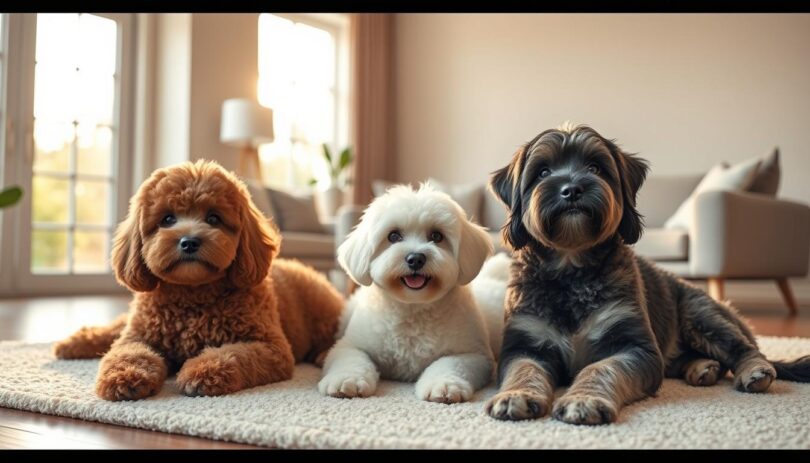




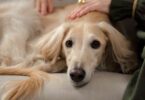
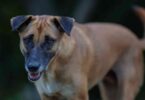
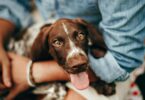
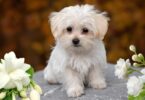
Leave a Comment